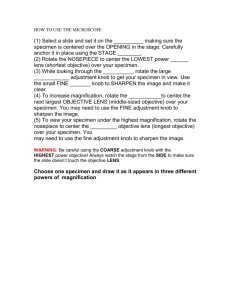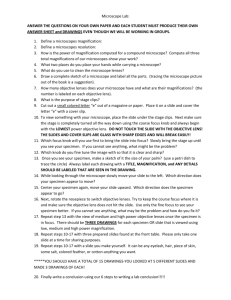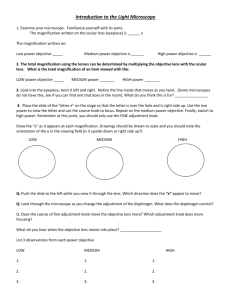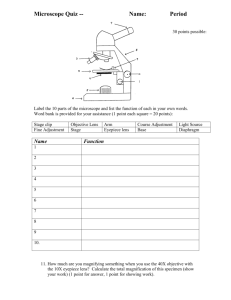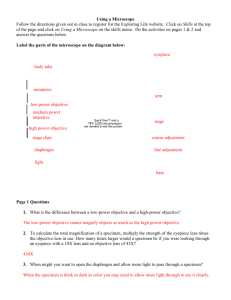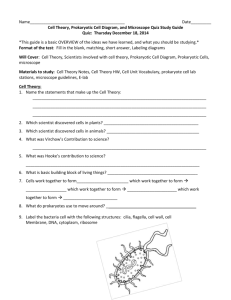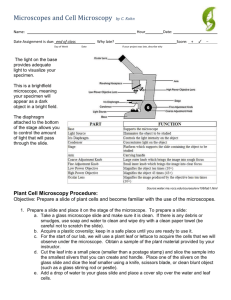Microscopes - The Biology Corner
advertisement
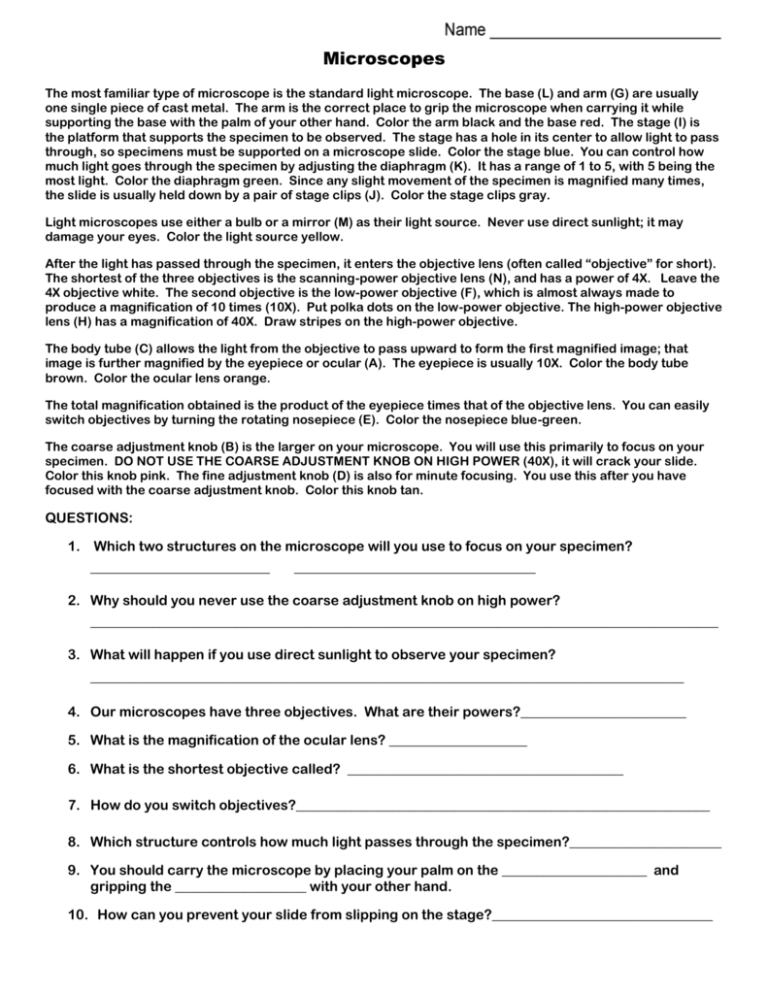
Microscopes The most familiar type of microscope is the standard light microscope. The base (L) and arm (G) are usually one single piece of cast metal. The arm is the correct place to grip the microscope when carrying it while supporting the base with the palm of your other hand. Color the arm black and the base red. The stage (I) is the platform that supports the specimen to be observed. The stage has a hole in its center to allow light to pass through, so specimens must be supported on a microscope slide. Color the stage blue. You can control how much light goes through the specimen by adjusting the diaphragm (K). It has a range of 1 to 5, with 5 being the most light. Color the diaphragm green. Since any slight movement of the specimen is magnified many times, the slide is usually held down by a pair of stage clips (J). Color the stage clips gray. Light microscopes use either a bulb or a mirror (M) as their light source. Never use direct sunlight; it may damage your eyes. Color the light source yellow. After the light has passed through the specimen, it enters the objective lens (often called “objective” for short). The shortest of the three objectives is the scanning-power objective lens (N), and has a power of 4X. Leave the 4X objective white. The second objective is the low-power objective (F), which is almost always made to produce a magnification of 10 times (10X). Put polka dots on the low-power objective. The high-power objective lens (H) has a magnification of 40X. Draw stripes on the high-power objective. The body tube (C) allows the light from the objective to pass upward to form the first magnified image; that image is further magnified by the eyepiece or ocular (A). The eyepiece is usually 10X. Color the body tube brown. Color the ocular lens orange. The total magnification obtained is the product of the eyepiece times that of the objective lens. You can easily switch objectives by turning the rotating nosepiece (E). Color the nosepiece blue-green. The coarse adjustment knob (B) is the larger on your microscope. You will use this primarily to focus on your specimen. DO NOT USE THE COARSE ADJUSTMENT KNOB ON HIGH POWER (40X), it will crack your slide. Color this knob pink. The fine adjustment knob (D) is also for minute focusing. You use this after you have focused with the coarse adjustment knob. Color this knob tan. QUESTIONS: 1. Which two structures on the microscope will you use to focus on your specimen? __________________________ ___________________________________ 2. Why should you never use the coarse adjustment knob on high power? ___________________________________________________________________________________________ 3. What will happen if you use direct sunlight to observe your specimen? ______________________________________________________________________________________ 4. Our microscopes have three objectives. What are their powers?________________________ 5. What is the magnification of the ocular lens? ____________________ 6. What is the shortest objective called? ________________________________________ 7. How do you switch objectives?____________________________________________________________ 8. Which structure controls how much light passes through the specimen?______________________ 9. You should carry the microscope by placing your palm on the _____________________ and gripping the ___________________ with your other hand. 10. How can you prevent your slide from slipping on the stage?________________________________
